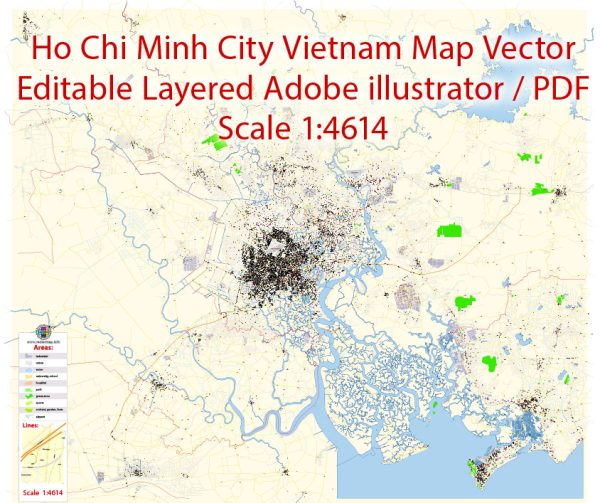Ho Chi Minh City, formerly known as Saigon, is the largest city in Vietnam and a bustling metropolis with a rich architectural heritage that reflects its complex history and rapid development. Here’s a description of the architecture in Ho Chi Minh City:
- French Colonial Influence: The architectural landscape of Ho Chi Minh City is heavily influenced by its colonial history. During the French colonial period (19th and early 20th centuries), many beautiful buildings were constructed in a blend of French and Vietnamese architectural styles. Notable examples include the Central Post Office, the Notre-Dame Cathedral Basilica of Saigon, and the Saigon Opera House. These structures feature elegant facades, arched windows, and ornate ironwork.
- Modern Skyscrapers: In recent decades, Ho Chi Minh City has undergone significant urban development and growth, resulting in a skyline filled with modern skyscrapers. District 1, in particular, boasts a collection of high-rise buildings that include luxury hotels, office towers, and residential complexes. Iconic buildings like the Bitexco Financial Tower and the Landmark 81, which is one of the tallest buildings in Southeast Asia, are prominent features of the cityscape.
- Traditional Vietnamese Architecture: Amidst the modernity, traditional Vietnamese architecture is still preserved in certain areas. You can find older, traditional houses known as “nha ruong” or tube houses, characterized by narrow facades and long, deep layouts. Many of these historic structures can be seen in District 5 (Chinatown) and District 10.
- Eclectic Mix: The architecture in Ho Chi Minh City is an eclectic mix of old and new, with a blend of styles from different periods. You can walk down a street and see a colonial-era building next to a sleek glass and steel skyscraper, reflecting the city’s diverse cultural and architectural influences.
- Street Food Stalls and Markets: While not traditional architectural landmarks, the street food stalls and markets, such as Ben Thanh Market, are an integral part of the city’s fabric. The bustling streets are lined with colorful awnings and open-air stalls, contributing to the vibrant atmosphere of Ho Chi Minh City.
- Green Spaces: Ho Chi Minh City is also working on incorporating more green spaces and sustainable architecture into its urban planning. You can find parks and green zones like Le Van Tam Park, Tao Dan Park, and the Saigon Zoo and Botanical Gardens, which provide much-needed relief from the urban hustle and bustle.
The architectural diversity in Ho Chi Minh City reflects its complex history and rapid urbanization. Whether you’re interested in historical French colonial architecture, modern skyscrapers, or the preservation of traditional Vietnamese designs, the city offers a rich tapestry of architectural styles that tell its unique story.


 Author: Kirill Shrayber, Ph.D.
Author: Kirill Shrayber, Ph.D.